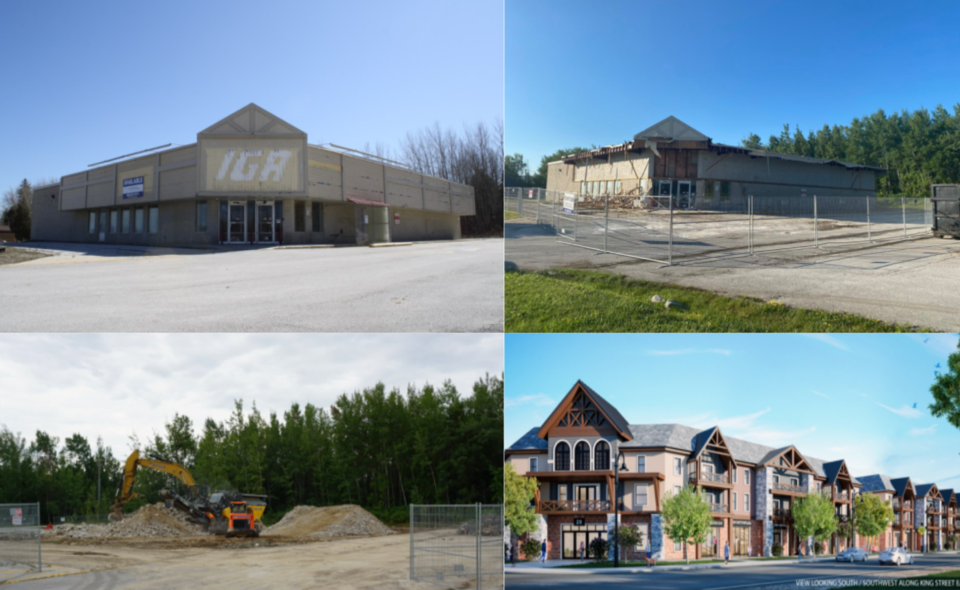In 2021, The Blue Mountains Attainable Housing Corporation (BMAHC) brought its first rental unit to the public, marking the first of many housing units the corporation hopes to roll out in its efforts to address a growing housing issue in The Town of The Blue Mountains (TBM).
In November, council moved to lease the town-owned home on 19 Napier St to BMAHC, which was originally slated for demolition.
The three-bedroom home sits on land that the town purchased in 2020 for its strategic location between the L.E. Shore Memorial Library and the Beaver Valley Community School property, and the home's good condition led staff to consider its viability as an attainable unit.
“The house does have a considerable amount of useful life left in it,” said TBM CAO Shawn Everitt in November. “We believe it is a good candidate for the Attainable Housing Corporation to actually get its first rental unit.”
Council moved to lease the property to BMAHC for a 66-month term beginning in December 2021, at a rate of $850 per month, and directed staff to execute a lease agreement.
The move to convert the home into a rental unit was the town's first brick-and-mortar victory against its local housing crisis, which has caused council and staff to worry about staffing issues and community growth in the future.
In July, the former Collingwood and TBM OPP detachment commander Insp. Mary Shannon said that younger constables have begun leaving the community due to skyrocketing housing costs.
“We're starting to see some of our younger officers looking to exit this area because of housing concerns,” she said. “They can't find the opportunity to purchase affordable housing, or even to find affordable rent and it is now impacting their ability to stay in this location."
This fall, TBM council approved the hire of four additional full-time firefighters due to increasing shortfalls in volunteer staff.
“If we don’t have young families living here, this is one of the consequences,” said Mayor Alar Soever in September. “In terms of looking at it from a financial perspective, might it not be better to put some money into providing attainable housing for firefighters and thereby make it attractive for volunteer firefighters to volunteer?”
“We just don’t have the stock to be able to execute on these great ideas,” Everitt said.
According to BMAHC, the average house price in TBM as of May 2021 was $995,115, which requires a household income of $188,399 to purchase.
The median rent for a two-bedroom apartment in TBM in May was $2,950 a month, requiring a household income of $117,882.
The average single-person household income in TBM for 2021 was $85,445, while the median single-person income was $47,460.
In response to these issues, BMAHC has worked to bring its planned Gateway project at 171 King St East to fruition.
The attainable housing development will host 84 rental units, an estimated 44 of which will be rented at attainable prices, and 12,500 square feet of commercial space.
The estimated $36.7 million project expects to rent its attainable units at $966 per month for a one-bedroom unit, $1,086 for a two-bedroom unit, and $1,975 for a three-bedroom unit.
The projected rental pricing would make its one-bedroom units accessible to single-income households making roughly $38,000 per year.
Construction is anticipated to begin in 2022, with occupancy projected by 2024.
BMAHC has requested significant co-investments from the town, in part to meet the requirements set out to access funding from higher levels of government.
It is anticipated that TBM will pay four per cent of the project's cost, including the following requested investments:
- Reinvestment of the town’s development charge for the project, at $850,000
- Reinvestment of the town’s permit and planning fees, at $200,000
- Reinvestment of future property taxes on the units, at $418,364 over the course of 10 years after the project’s completion
- Leasing 10,000 square feet of the project’s commercial space to the town for ten years, at $1.78 million total
- Forgiveness of the $1.2 million operating loan given to BMAHC
- A contribution of $600,000 for land and demolition costs
Grey County is expected to similarly pay four per cent of the project's cost, with the federal government covering the remainder.
At an economic development advisory committee meeting in December, councillor and BMAHC representative Rob Sampson suggested that the project could provide housing for volunteer firefighters.
"What we're hoping to do is allocate to the town up to five spaces in the attainable category, that they can use for some of the essential service individuals that need to be housed," he said. "In our town, one of them, as you now know, is fire volunteer fire service members."
Sampson also pointed out that other municipalities offer doctors free housing for a period of time, in order to attract them to their communities, and that it could be an option to consider as attainable units roll out in the community.
"They're saying, here's some affordable housing, in some cases it's free housing for X number of years, while the young doctors get their offices set up and get started to climb out of the mountain of debt they've generated to become a doctor," he said. "We may have to start to do that ourselves, as well, if we want to have that kind of competitive edge, frankly, against our neighbouring communities who are doing that."



